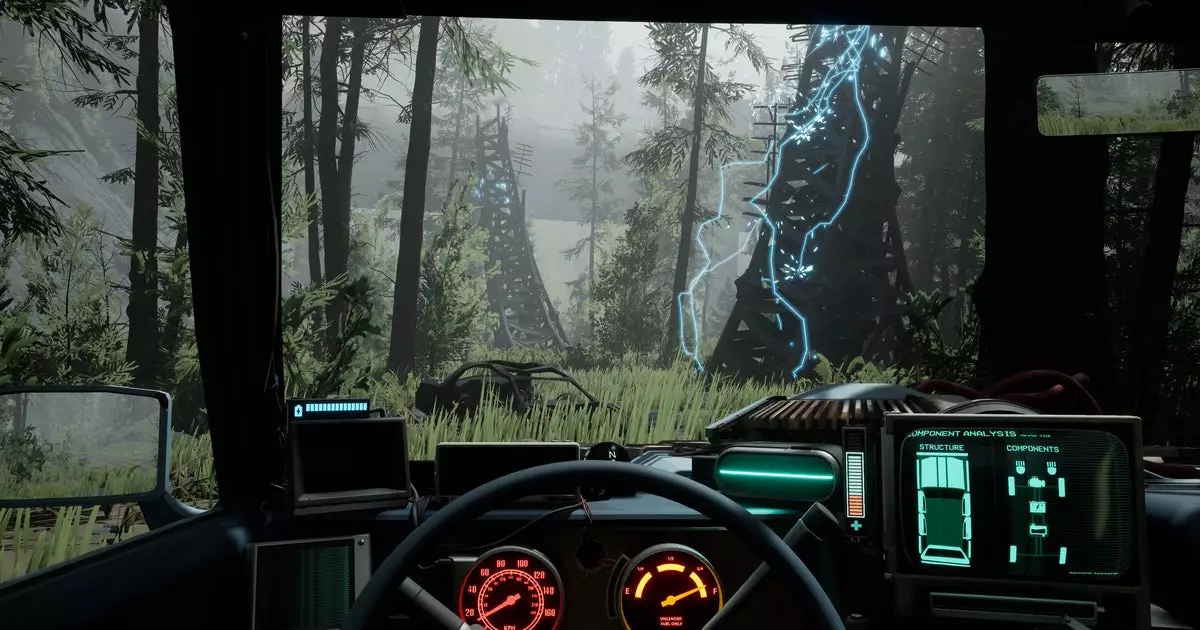In the ever-evolving landscape of video game design, player experience is often at the forefront of development choices. Ironwood Studios’ Pacific Drive serves as a fascinating example of how developers respond to player feedback, particularly in the realm of difficulty settings. The game merges survival mechanics with a unique exploration narrative, and recent updates have expanded its adaptability, reflecting a growing trend in the gaming industry—customizing difficulty to cater to diverse player preferences.
At its core, Pacific Drive requires players to engage in constant vehicle maintenance and repair—an integral part of the gameplay loop. As players navigate through a haunting environment in their paranormal station wagon, the necessity of managing corroded doors and malfunctioning engine parts becomes glaringly apparent. While this element enhances the immersion and challenges players to think on their feet, it has drawn mixed reactions. Some players feel that the constant crafting demands can detract from the overall pace of the game, introducing a sense of labor that may lead to frustration.
Ironwood Studios has addressed these sentiments head-on, allowing for a spectrum of difficulty options that either alleviate the strain of crafting or amplify it, depending on player desire. This acknowledgment of varied player experiences is commendable, as it recognizes that one size does not fit all in gaming preferences.
With the latest update, Pacific Drive has introduced several difficulty presets catering to both casual gamers and those seeking a more intense challenge. Players can now choose from modes like “Scenic Drive,” which minimizes crafting and negates threats to life, offering a more relaxed gaming experience. This will appeal to those who enjoy the environment and narrative of the game without the stress of constant survival demands.
Conversely, players looking for high-stakes gameplay can select modes such as “Olympic Gauntlet” or “Iron Wagon,” which ramp up the challenges significantly. These presets create a scenario where everything from environmental hazards to vehicle damage is substantially intensified. The latter mode even introduces the peril of losing your saved game upon failure, injecting a tantalizing tension into the gameplay that hardcore gamers may crave.
One of the most notable features of the update is the ability for players to customize their experience through difficulty sliders. This option empowers players to tweak specific aspects of gameplay, such as the severity of flat tires or the intensity of radiation, creating an individualized adventure that reflects their preferences. The option to toggle certain threats, like the infamous instability storms, allows players to construct their own unique challenges within the game’s framework.
Moreover, these adjustments can enhance replayability. Players seeking to explore different facets of the game can manipulate the tools at their disposal to curate a fresh experience each time they play. This player-driven approach to game difficulty is a particularly effective way of maintaining engagement, as it eliminates the monotony that can sometimes accompany static difficulty settings.
In addition to gameplay adjustments, recent updates have introduced new features that enrich player experience. The ability to customize the in-game soundtrack by uploading personal music files is a thoughtful addition. Soundtracks often play a crucial role in immersing players in gameplay, and having the freedom to choose what accompanies their journey adds an intimate layer to the experience.
Furthermore, this customization ties back into the core theme of Pacific Drive—creating an atmosphere that resonates with players on a personal level. By allowing players to influence the auditory backdrop of their game, Ironwood Studios not only fosters immersion but also enhances the overall enjoyment of the gameplay experience.
Pacific Drive stands as a testament to modern gaming’s responsiveness to player feedback. By embracing varied difficulty levels and offering customization options, Ironwood Studios showcases its commitment to making the game accessible and engaging for a range of players. This willingness to evolve and adapt echoes a broader trend in the industry where player agency is igniting creative rethinking of gameplay mechanics. As Pacific Drive continues to grow and adapt, the overall player experience is set to flourish, paving the way for future innovations in how difficulty and crafting interact in survival games.

